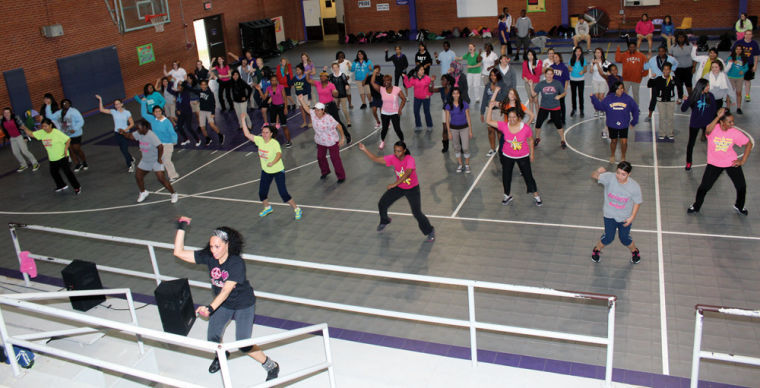Shared use of public facilities/services is a way to maximize the beneficial use of public facilities and return on investment by expanding access to multiple entities and the general public. The most common example actually involves 911 combined dispatch centers, which have been around for decades, helping the public access emergency services more quickly while saving money and maximizing the use of expensive space and technology. More recent examples involve local schools, considering school facilities and grounds as parts of a larger public infrastructure. Instead of sitting empty after school hours, school facilities can be made available for recreational use, as well as use as public libraries, for adult life-long learning, and for public meeting space, cultural performances, and community events. Other examples of shared-use public facilities include shared fire and EMS stations, shared parking facilities, and consolidated “311” service for public access to a broad range of city and county services.
Why is this important to your community?
Public facilities cost public money to build and operate. Public buildings—whether schools, parking decks, or other facilities that sit idle needlessly—are not providing the maximum return on investment of those public dollars. Similarly, shared fire and EMS bases and combined dispatch can foster interagency cooperation and mutual learning, while making the most of public space and employee salaries. Shared phone access to a range of community services makes it easier for the public to get the service they need, and avoids duplication of effort.
The schools example is particularly relevant in times of tight parks and recreation budgets, because too often children and their families find the gates to school grounds, with playgrounds, athletic fields, gymnasiums, performing arts facilities, libraries, and meeting rooms, locked after school hours, keeping them from opportunities to be active. Making school grounds and facilities available after hours greatly expands recreational access at a tiny fraction of the cost of building and operating more parks. Conversely, the revenue that a school district may receive from other public entities that share access helps to defray costs of operations and maintenance—a win-win-win for public schools, local parks departments, and the general public. Other examples of shared use may include parking decks and shared office buildings.
Where is it appropriate to use?
What priorities does it address?
What other tools are related?
How does it work?
The shared use of public facilities is facilitated by joint use agreements between two or more entities, often school districts and municipal parks departments, or non-profits such as a YMCA or Boys& Girls Club. While informal agreements, based on a handshake, are not uncommon, formal legal agreements offer increased protection for all entities by clearly setting out the terms for the shared use, including the sharing of costs, user fees, hours of public access, and responsibilities for maintenance, operations, staffing, and liability. Concerns about liability and vandalism are primary reasons that some school districts are reluctant to allow public access. However, school district liability policies often cover broad public use. The National Policy and Legal Analysis Network maintains a list of resources to address liability and other concerns about joint use. Plus, all 50 states have legal provisions for some form of immunity that protects public entities from liability.
The resources section provides a wealth of best practice approaches to shared use, as well as many model joint use agreements. Generally, there are three types of joint use agreements.
- Basic Joint Use – Where one entity, such as a school district, solely owns and operates facilities but allows another entity defined access to them.
- Joint Development and Use – Where two or more entities, such as a municipal parks department and a YMCA, jointly finance, build, and operate a facility specifically designed for joint use.
- Joint Use Partnerships – Ongoing agreements between entities to jointly use and operate multiple facilities and programs. CharMeck 311 is an example of this type of partnership; residents can access a broad range of city and county services by calling one number.
Resources
- Promoting Physical Activity through Joint Use Agreements: A Guide for North Carolina Communities
- Center for Cities + Schools
- Liability Risks for After-Hours Use of School Property to Reduce Obesity: North Carolina
- Change Lab Solutions: Law & Policy innovations for the Common Good, Model Joint Use Agreement Resources
- Journal of Park and Recreation Administration, Strategies for Creating Successful Joint Use Agreements
- California Project LEAN. (February, 2010). Maximizing Opportunities for Physical Activity through Joint Use of Facilities.
- Joint Use Statewide Task Force. About Joint Use.
- Public Health Law & Policy Network. (March 2009). What Is a Joint Use Agreement? A Fact Sheet for Parents, Students, and Community Members.
- Montgomery County, Maryland Shared Use Facilities Website
Ready to get started?
Using the Tool
While all shared use arrangements must be custom-designed and tailored to the needs, mission, operations and suitability of facilities under consideration for shared use by the parties to the agreement, these are some basic steps in creating a shared use relationship.- Facility Needs and Suitability Assessment: All entities considering a shared use arrangement should begin with an assessment of their needs and the suitability of facilities under consideration for shared use. A school district considering making its school grounds available after school hours should start with a comprehensive assessment of the condition and suitability of its facilities and grounds for public use, including potential hours of operations, user age groups, and estimates of the potential costs and revenues associated with making facilities available, as a basis for establishing shared use fees. Likewise, potential users, such as a municipal parks department, should document the need for additional facilities based on established level of service standards for facilities such as athletic fields, or based on documented over-use of municipal facilities. Specific user groups, including athletic leagues that would have scheduled access to school facilities, should also be identified. This initial step should also include a review of state enabling legislation, as well as policies for joint use of schools established by the state board of education. In North Carolina, joint use agreements are provided for under the Community Schools Act (1977, 1981) with the stated purpose “to encourage greater community involvement in the public schools and greater public use of school facilities.” The act gives local boards of education the ability to develop programs and policies for joint use that are consistent with the policies set by the state board of education.
- Adopt a Policy Based on the Facility Needs and Suitability Assessment, the school district or other entity owning the subject facility, should establish broad joint use policies including permitted uses, hours of availability, responsibilities for security, supervision, and maintenance, and fees for use of facilities.
- Establish Relationships The school district or other entity owning the subject facility should evaluate potential partners for compatibility, including parks departments, non-profits, faith-based organizations and other educational organizations. Suitable partners would then establish mutually acceptable terms for the shared use.
- Develop and Execute a Joint Use Agreement A Joint Use Agreement is a contract executed by parties wishing to share a facility for public use, setting out terms and conditions, including provisions for user fees or cost sharing, as well as allowable activities and responsibilities for supervision, facility use programming, program operation, and facility maintenance.
Partners
- Colleges and Universities
- Departments of Education / School Districts
- Elected Officials
- Health Care Providers
- Housing Authorities
- Landscape Architects, Planners, and Urban Designers
- Municipal Departments
Where has it worked?
Apex Public Schools - Apex, NC
About the Program
One of the most comprehensive studies of the effectiveness of shared use of school facilities was published in 2013 in the Journal of Park and Recreation Administration which examined the shared use of schools in Apex, NC. A suburban community near Raleigh, the Town of Apex had a population of 38,000 in 2010, with a large and growing proportion of school-age children and youth. While Apex maintains over 200 acres of municipally-owned parks, the significant and growing demand for youth recreation and athletic facilities is being cost-effectively met through the joint use of school grounds which once went unused after school hours. The Town and school district have a long-term, 25-year joint use agreement for the on-going use of school facilities for recreation programs that are jointly operated by the Town’s parks department and school athletic and physical education staff and coaches. In addition, school facilities are available for lease for special uses, such as community fairs and performing arts events.
Why it works
The study of the Apex experience concluded that the overwhelming success of the joint use of Apex schools was due to four factors.
- Deliberate Formation and Maintenance of Relationships in which trust exists between parties to the joint use agreement, including parks department director and staff, school principals, teachers and coaches, and managers of athletic leagues.
- A Shared Vision of the mutual value of the joint use agreement and the greater benefits to the public achievable through joint use.
- Mutual Tangible Benefits – The Town and school district recognize that the sharing of facilities and joint operations of programs has tangible benefits to both entities. While the Town’s use of school property adds to the wear and tear of athletic fields, the Town parks department, with its greater resources for grounds maintenance, is responsible for school recreation facility maintenance, saving school district money and producing higher quality facilities. Conversely, the Town has use of an expanded inventory that it could not feasibly provide due to a lack of funding and available land. Without the joint use agreement, many of the Town’s youth sports program would not exist.
- Optimizing the Use of Resources to Meet Growing Demands – Although school classrooms are in continuous use when schools are in session, playgrounds, sports fields, and performing arts facilities get sparse use even during school hours and no use at all when schools are closed. Considering the cost to build and operate these underutilized facilities indicates a very low return on public investment in the form of beneficial use by the public. Through joint use, the return on investment is dramatically increased, costs of participating entities go down and strong synergies are created for public benefit.
http://www.apexnc.org/services/parks-recreation-cultural-resources
- Departments of Education / School Districts



